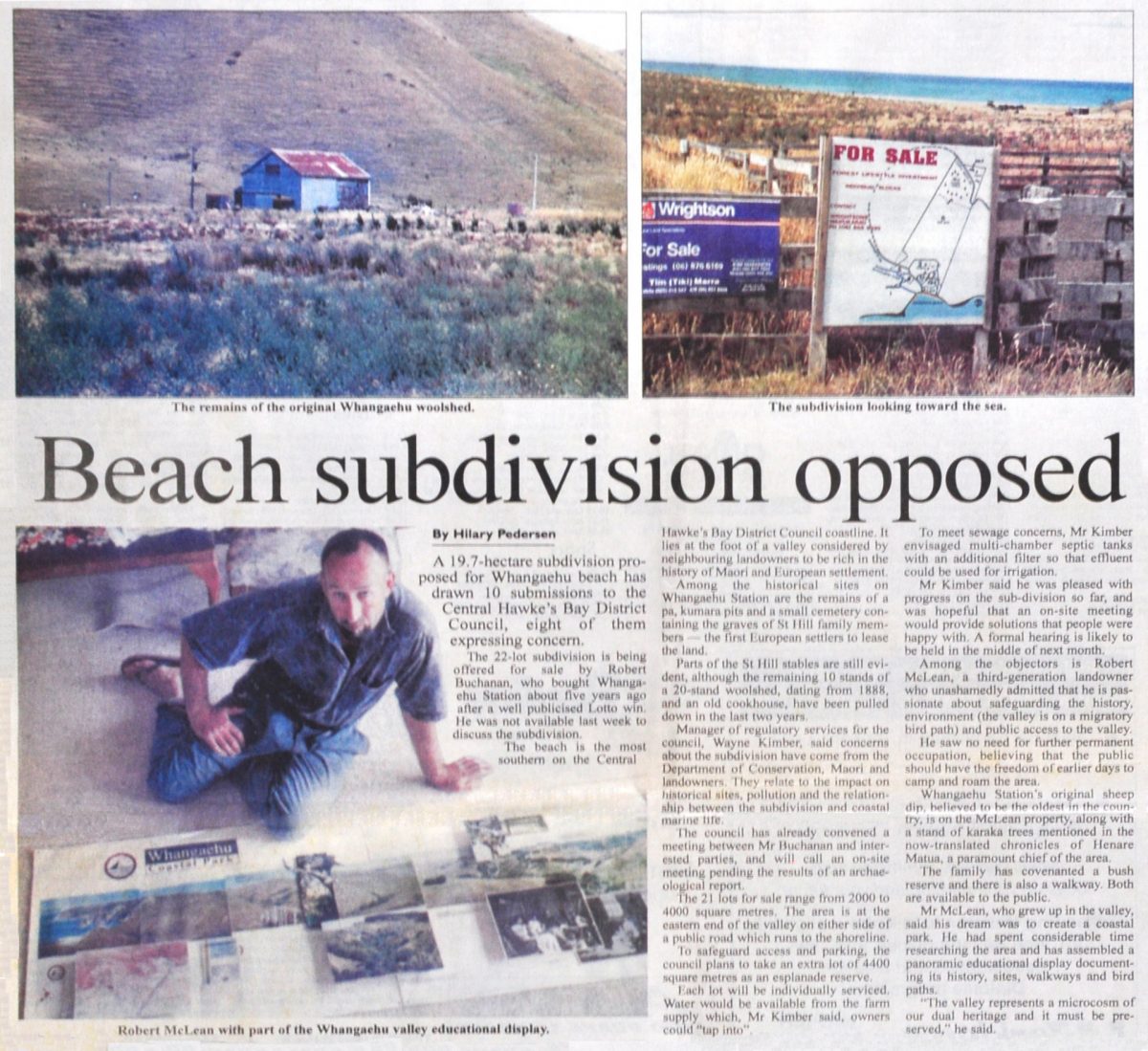Beach subdivision opposed
By Hilary Pedersen
A 19.7-hectare subdivision proposed for Whangaehu beach has drawn 10 submissions to the Central Hawke’s Bay District Council, eight of them expressing concern.
The 22-lot subdivision is being offered for sale by Robert Buchanan, who bought Whangaehu Station about five years ago after a well-publicised Lotto win. He was not available last week to discuss the subdivision.
The beach is the most southern in the Central Hawke’s Bay District Council coastline. It lies at the foot of a valley considered by neighbouring landowners to be rich in the history of Maori and European settlement.
Among the historical sites on Whangaehu Station are the remains of a pa, kumara pits and a small cemetery containing the graves of St Hill family members – the first European settlers to lease the land.
Parts of the St Hill stables are still evident although the remaining 10 stands of a 20-stand woolshed, dating from 1888, and an old cookhouse, have been pulled down in the last two years.
Manager of regulatory services for the council, Wayne Kimber, said concerns about the subdivision have come from the Department of Conservation, Maori and landowners. They relate to the impact on historical sites, pollution and the relationship between the subdivision and coastal marine life.
The council has already convened a meeting between Mr Buchanan and interested parties, and will call an on-site meeting pending the results of an archaeological report.
The 21 lots for sale range from 2000 to 4000 square metres. The area is at the eastern end of the valley on either side of a public road which runs to the shoreline.
To safeguard access and parking, the council plans to take an extra lot of 4400 square metres as an esplanade reserve.
Each lot will be individually serviced. Water would be available from the farm supply which, Mr Kimber said, owners could “tap into”.
To meet sewage concerns, Mr Kimber envisaged multi-chamber septic tanks with an additional filter so that effluent could be used for irrigation.
Mr Kimber said he was pleased with progress on the sub-division so far, and was hopeful that an on-site meeting would provide solutions that people were happy with. A formal hearing is likely to be held in the middle of next month.
Among the objectors is Robert McLean, a third-generation landowner who unashamedly admitted that he is passionate about safeguarding the history, environment (the valley is on a migratory bird path) and public access to the valley.
He saw no need for further permanent occupation, believing that the public should have the freedom of earlier days to camp and roam the area.
Whangaehu Station’s original sheep dip, believed to be the oldest in the country, is on the McLean property, along with a stand of karaka trees mentioned in the now-translated chronicles of Henare Matua, a paramount chief of the area.
The family has covenanted a bush reserve and there is also a walkway. Both are available to the public.
Mr McLean, who grew up in the valley, said his dream was to create a coastal park. He had spent considerable time researching the area and has assembled a panoramic educational display documenting its history, sites, walkways and bird paths.
“The valley represents a microcosm of our dual heritage and it must be preserved,” he said.
Photo captions –
The remains of the original Whangaehu woolshed.
The subdivision looking toward the sea.
Robert McLean with part of the Whangaehu valley educational display.












Do you know something about this record?
Please note we cannot verify the accuracy of any information posted by the community.